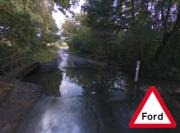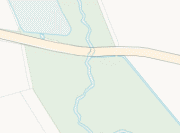 I’ve mentioned a few times recently that I am expecting a rush of people trying to become ADIs this year. The recession is showing no signs of letting up, and many people are losing their jobs as their employers go to the wall. For many, self-employment is the only chance they have of working. I’m already seeing a few signs of increased interest in the job.
I’ve mentioned a few times recently that I am expecting a rush of people trying to become ADIs this year. The recession is showing no signs of letting up, and many people are losing their jobs as their employers go to the wall. For many, self-employment is the only chance they have of working. I’m already seeing a few signs of increased interest in the job.
I’ve also said that – in my opinion – people becoming instructors doesn’t significantly affect the amount of work available. I mean, it’s obvious that at some point there could be too many instructors, but I don’t think we’ve ever hit that point (except possibly in a few depressed areas of the country).
So why are so many existing ADIs suffering or even giving up the job? In my opinion, it’s down to a complex mixture of poor marketing, bad advice, and greed.
I saw a magnetic sign on the side of a Hackney Cab today. It was advertising a local driving school – probably a one-man band, like most of us are – and it said:
5 lessons for £50
Lessons £16 an hour
I’ve seen the school car a few times and thought nothing of it. It’s not a banger or anything, and looks like it’s leased or owned. And I saw another ad in a takeaway a couple of days ago that said:
4 lessons £40.01
Yes, it did have the 0.01! I didn’t see what the normal hourly rate was, but you can be reasonably sure it wasn’t more than £20.
When someone becomes an ADI they have a choice of joining a franchise or going solo. Those who are genuinely not clear about which path to take are often given very bad advice by established ADIs who have issues with franchises. Many of these will have started out on a franchise of some sort, but once they were established they went solo. However, for some inexplicable reason, they try to persuade new ADIs to go solo right at the start!
Other newly-qualified instructors are just greedy, and reason that if they are doing 40 hours of lessons a week then paying a franchiser a fee of between £100-£200 is money they could have in their pockets. The difficult part, though, is getting those 40 hours. As a new ADI, it’s like taking up football for the first time and then expecting to get picked for England against Holland next month. It doesn’t happen.
This is where the bad marketing kicks in. In order to try and get the 40 hours they have to advertise, and since they’re not the only ones in the market for pupils, they need a hook. The hook is lower prices. But then, the problem is simply that even if they could get anywhere near 40 hours, every £1 they knock off their lesson rates is another 2 hours of lessons they need to do just to remain where they are. The fact that they don’t get 40 hours – many are lucky to be doing half that, and yet their original business plan demanded that they get around 40 hours at a full hourly rate – just compounds the issue.
Now, I charge £23 an hour for learner lessons, and I calculate that my pre-tax profit from that must work out to somewhere between £12-£15 an hour (very approximately). Someone charging £16 an hour, with similar overheads, would be making between £5-£8 an hour pre-tax, which would fall still further when the “5 for £50” lessons are factored in. Then there’s the advertising outlay (Lord knows how much it costs to have an advert stuck on a taxi), and the likelihood that it will be ineffective.
Slapping an A5 flyer in the local Chinese or Indian takeaway doesn’t fill diaries. Nor does sticking the equivalent on the side of a taxi. Neither can keep diaries full. At best, it gets a couple of pupils. Usually, it gets none.
Of course, I appreciate that in some areas the going lesson rate is low, but around here there’s no such issue, and someone advertising £16 lessons is only doing it to try and get work. In fact, he will have to be doing 30% more lessons than me just to make the same profit – and yet he’s doing this because he’s probably working 50% less hours and desperately needs to fix it! The same undercutting is happening on a pro rata basis everywhere. £7 an hour is a hell of a price to pay to – at best – tread water.
Finally, those lower profits enhance the need to cut costs, which will inevitably affect the lesson quality (less driving to save fuel expenditure). This, in turn, affects reputation, and that prevents referrals and can easily lead to loss of pupils, who know when they’re being taken for a ride.
This is where I think the problem lies. How long can newcomers survive with rising costs in this recession, when they’re on their own without a pupil base, and are charging £7 less than the going rate? Yet still you hear advice about going it alone!
Speaking personally, I’ve got a good pupil base and good referrals – and it took time to build that up. I’ve been doing a minimum of about 25-30 hours (except in the snow last year) and a maximum of 50 hours (once) throughout 2011. My average seems to be between 33-37 hours, and 2012 looks set to continue the same way.
Unfortunately, those charging silly prices couldn’t run a viable business even if they had the same level of work as me! The costs involved in running a driving school ensure that.
 Now, I don’t know why I didn’t just go for Kilner Jars in the first place (well, I tried, but there were no obvious stockists locally), so I started looking around. And I found that ASDA do hinged-lid jars of various sizes . There was a gushing review of the things from some dizzy woman on a foodie website somewhere, so I went into the store and bought a few.
Now, I don’t know why I didn’t just go for Kilner Jars in the first place (well, I tried, but there were no obvious stockists locally), so I started looking around. And I found that ASDA do hinged-lid jars of various sizes . There was a gushing review of the things from some dizzy woman on a foodie website somewhere, so I went into the store and bought a few. confused
confused To any PDIs out there, adiNEWS Magazine is offering a free 6 month subscription.
To any PDIs out there, adiNEWS Magazine is offering a free 6 month subscription. Well done Javid, who passed with 5 driver faults today. And still the good start to the year continues!
Well done Javid, who passed with 5 driver faults today. And still the good start to the year continues! service drivers possessing all the relevant anorak certificates are capable of judgement errors in the heat of the moment.
service drivers possessing all the relevant anorak certificates are capable of judgement errors in the heat of the moment. clearly. I take my pupils there sometimes… but not when it’s been raining, because then it COULD be as big as a lake (and often is)!
clearly. I take my pupils there sometimes… but not when it’s been raining, because then it COULD be as big as a lake (and often is)! ven get close to being able to identify features like this from the style of print.
ven get close to being able to identify features like this from the style of print.
 Well done Emily, who passed this afternoon first time with 7 driver faults. And so, the good start to the year continues!
Well done Emily, who passed this afternoon first time with 7 driver faults. And so, the good start to the year continues!